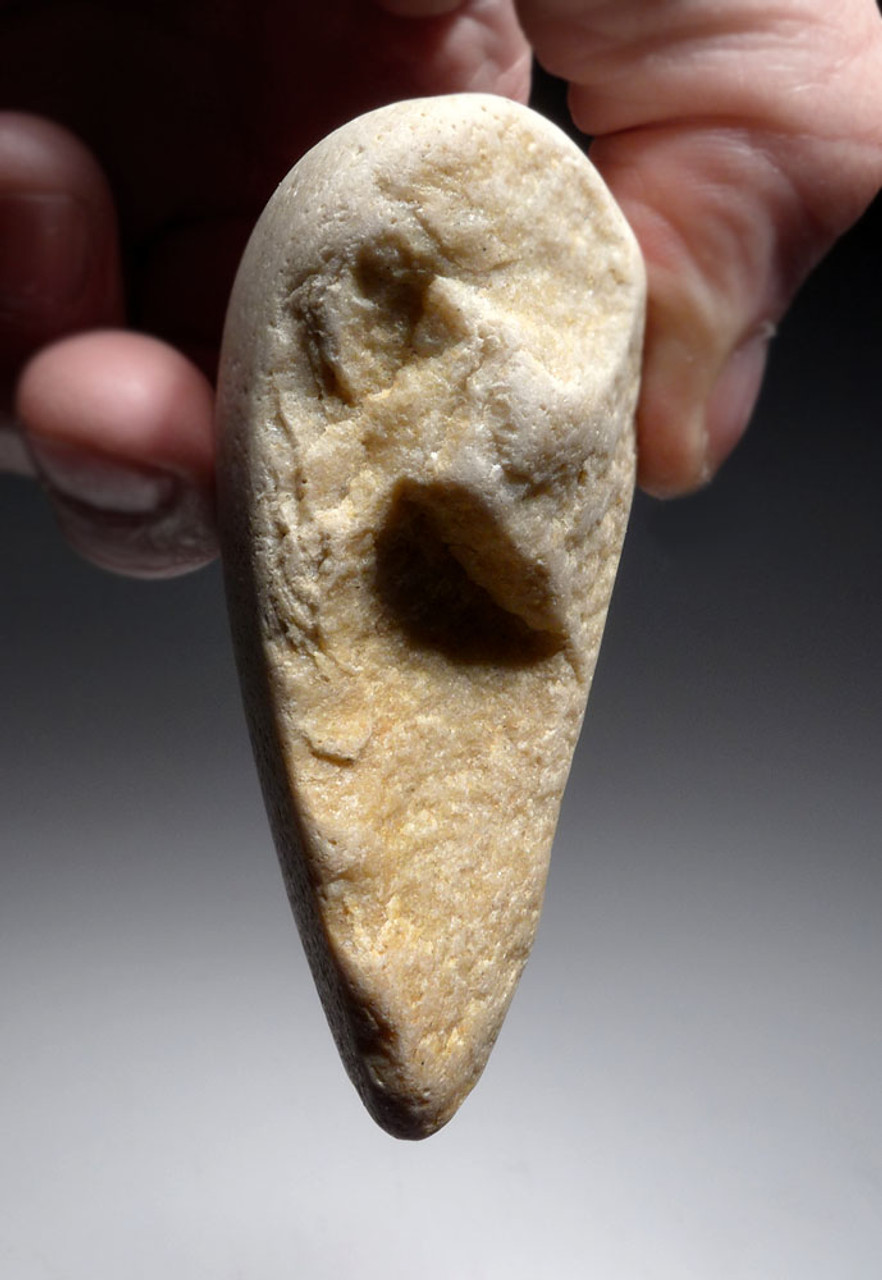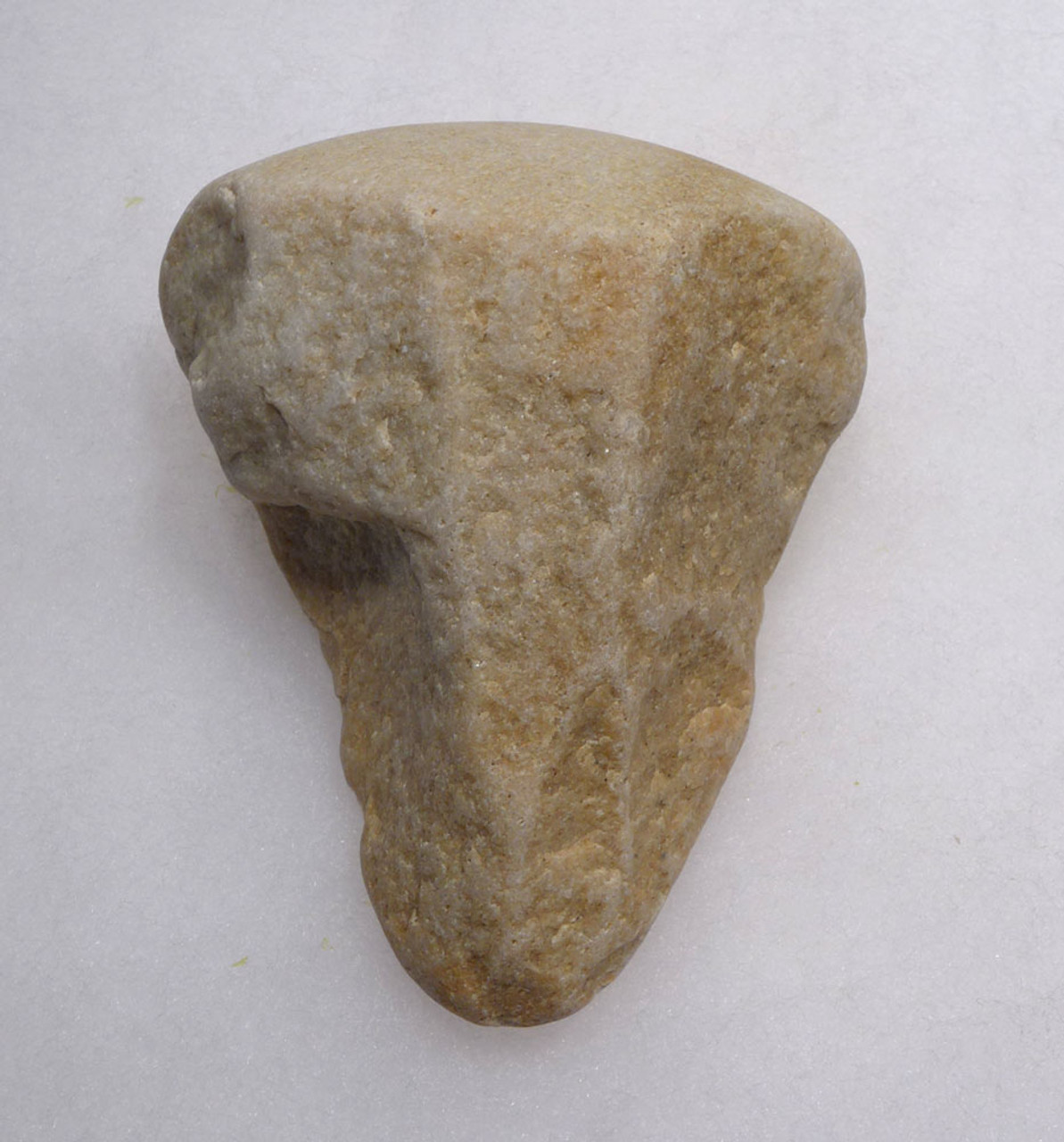Product Description
SEE MORE LOWER PALEOLITHIC ACHEULEAN STONE TOOL ARTIFACTS
This Early Man Stone Age tool is a unique transitional proto-hand axe. It dates from the Early Acheulean of Portugal and was made by Homo heidelbergensis (Homo erectus). It was found on a site that yielded both older Oldowan pebble tools, with some later period early Acheulean examples such as this specimen. One can see a stone cobble used with much of the original form and surface retained for the grip portion. Unlike more simplistic pebble choppers, this hand axe shows strong Acheulean flaking and form with an elongated profile and almondine shape. The site this was collected from is a coastal region and most of the Lower Paleolithic tools found there show wear and erosion from the high energy environment they were found in. Excellent flaking can be seen on both sides with classic zig-zag flaking down the cutting edges - a trait only seen in human-flaked tools, made by opposing strikes to the stone. Later Acheulean hand axes would emerge in time, with fully flaked grips and more refined secondary flaking on all surfaces.
As a testament to its age and authenticity, the patina on the cutting edge is heavy and well-deposited with no modern crushing.
By the time early humans made their way into Europe, Pebble Tool technology in Africa had already been replaced by the proliferation of Acheulian bifacial handaxes roughly three quarters of a million years later. Pebble tool traditions were brought into Europe by Homo erectus moving north up from Africa, and then replaced with the more advanced flaking and forms of the Acheulean tradition.
 US DOLLAR
US DOLLAR
 EURO
EURO
 AUSTRALIAN DOLLAR
AUSTRALIAN DOLLAR
 CANADIAN DOLLAR
CANADIAN DOLLAR
 POUND STERLING
POUND STERLING


























